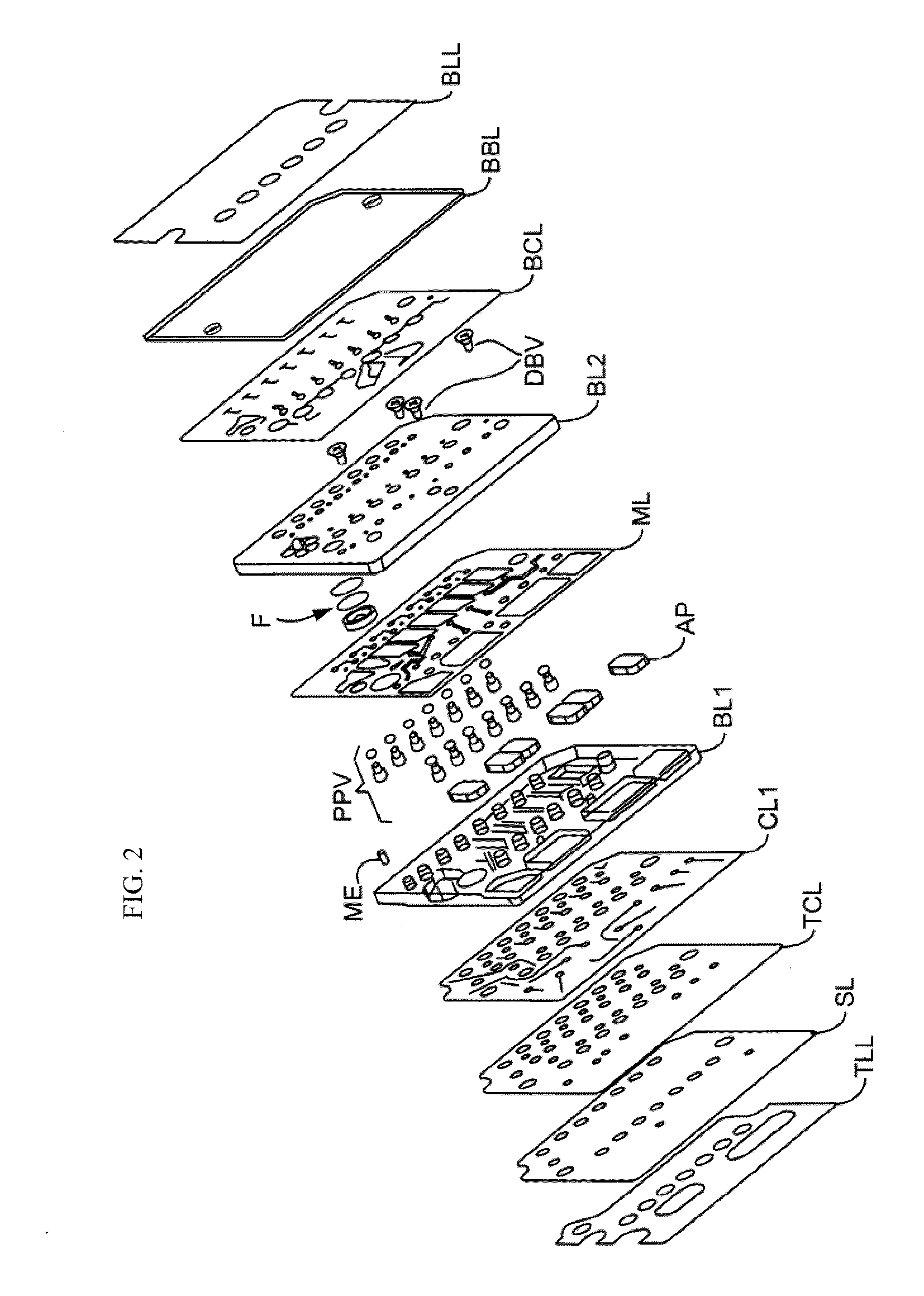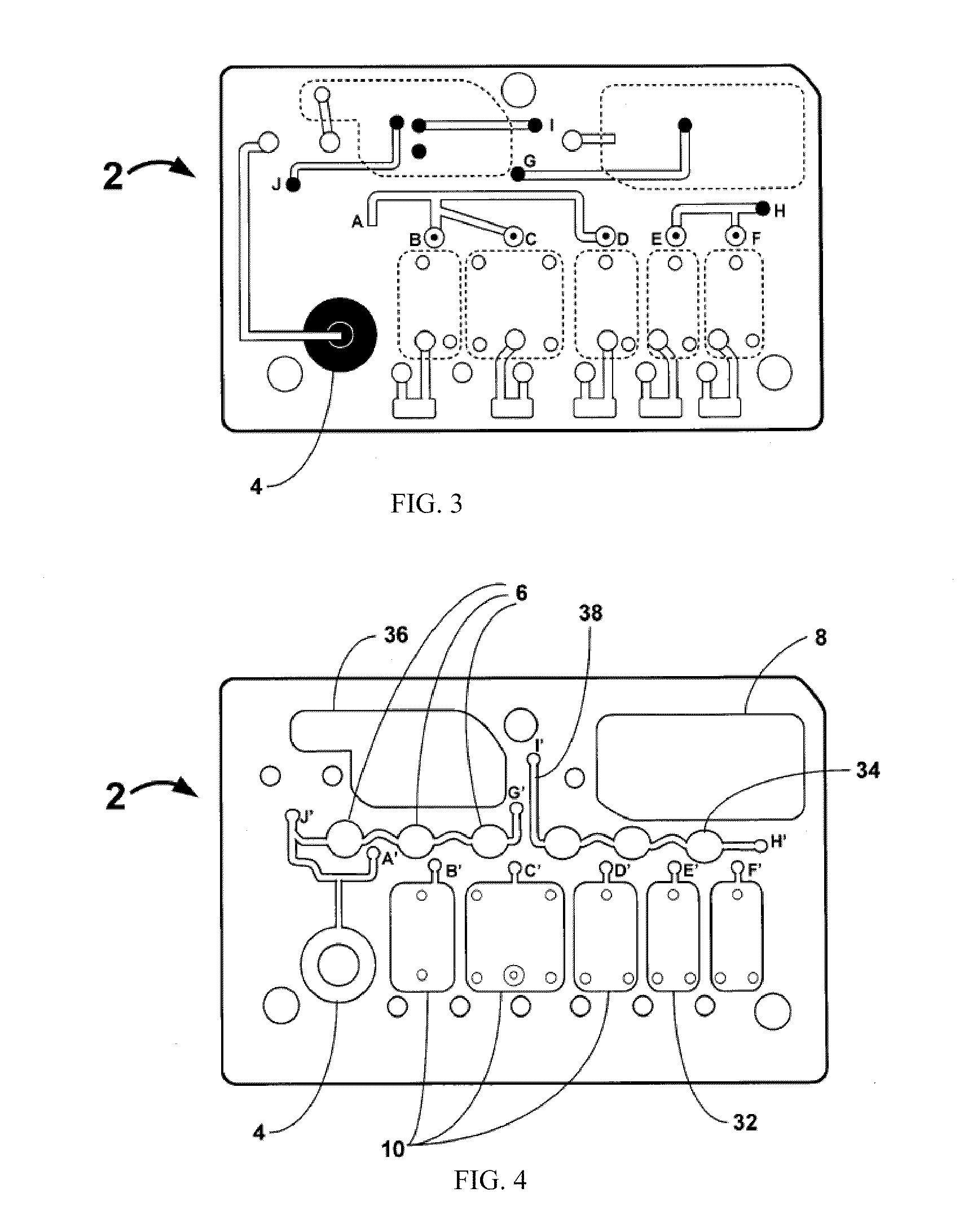Detection and quantification of analytes in bodily fluids
a technology of bodily fluids and analytes, applied in the field of detection and quantification of analytes in bodily fluids, can solve the problems of time-consuming and costly, and achieve the effect of reducing the number of assays
- Summary
- Abstract
- Description
- Claims
- Application Information
AI Technical Summary
Benefits of technology
Problems solved by technology
Method used
Image
Examples
example 1
Trinder Reagent Spectrum
[0132]Several color forming chemistries are applicable for use in the present invention, including those of peroxidase reactions. Peroxidase chromophores are well known in the art, as exemplified by Trinder reagents such as TODB or TOOS. A Trinder reagent will generate a reaction product having an absorption spectrum such as that exemplified in FIG. 8. As shown in FIG. 8, the width of the absorption spectrum at about half height of spectrum is about 100 nm. The width of the spectrum indicates that the absorption characteristics of a Trinder reagent make measurement of absorption applicable over a range of wavelengths.
example 2
Assay Simulation for a Light Source and Absorbing Species Having Matching Spectrums
[0133]In the present invention, a light source may have an emission spectrum that perfectly overlaps with the absorption spectrum of the absorbing species. Using values that are typical for the chemistry and devices of the present invention, Table 1 shows the calculation for one analyte concentration. As shown in Table 1, an analyte having a concentration of 1.5 mM gives an absorbance of 0.25 (44% transmission) after dilution 1:30 when measured at the maximum absorbance (at λmax=50,000) with a pathlength of 0.1 cm, which would be typical of single use cartridges. FIG. 9 demonstrates the spectral response at this concentration, from which it can be seen that the best response is at λmax of 500 nm.
TABLE 1Conditions for spectraLuminescenceλmax500nmHalf width30nmIntensity100000counts (total)Absorptionλmax500nmHalf width40nmεM (λmax)50000Pathlength, l0.1cmConc. (sample)1.50E−03MDilution30FoldA @ λmax2.50E−...
example 3
[0134]Using the parameters given in Example 2, the response of a cholesterol assay is shown in FIG. 10 based on attenuation of light at λmax. As shown in FIG. 10, the assay signal measured at λmax is well modulated over the clinical range of tested cholesterol levels.
PUM
| Property | Measurement | Unit |
|---|---|---|
| wavelength | aaaaa | aaaaa |
| volume | aaaaa | aaaaa |
| volume | aaaaa | aaaaa |
Abstract
Description
Claims
Application Information
 Login to View More
Login to View More - R&D
- Intellectual Property
- Life Sciences
- Materials
- Tech Scout
- Unparalleled Data Quality
- Higher Quality Content
- 60% Fewer Hallucinations
Browse by: Latest US Patents, China's latest patents, Technical Efficacy Thesaurus, Application Domain, Technology Topic, Popular Technical Reports.
© 2025 PatSnap. All rights reserved.Legal|Privacy policy|Modern Slavery Act Transparency Statement|Sitemap|About US| Contact US: help@patsnap.com



